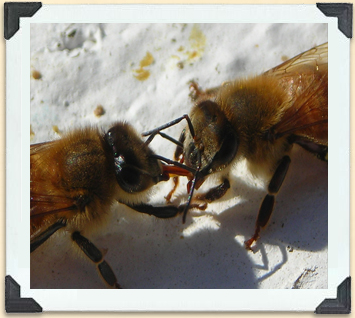Life in a Hive

Foraging worker bees transfer nectar to those in the hive; it's then placed in cells that are capped with wax.
© Ontario Beekeepers' Association, Technology Transfer Program
Nectar Transfer
At some point, the young worker bee is responsible for receiving the nectar from a foraging bee returning to the hive, and putting it into a cell. She also adds an enzyme to it, which helps ripen the honey.
If there are not enough worker bees on hand to take in the nectar from foraging bees, they will perform a special dance, called the "tremble dance," to encourage other worker bees to help out with this job. Bees use different dances to communicate with each other.




